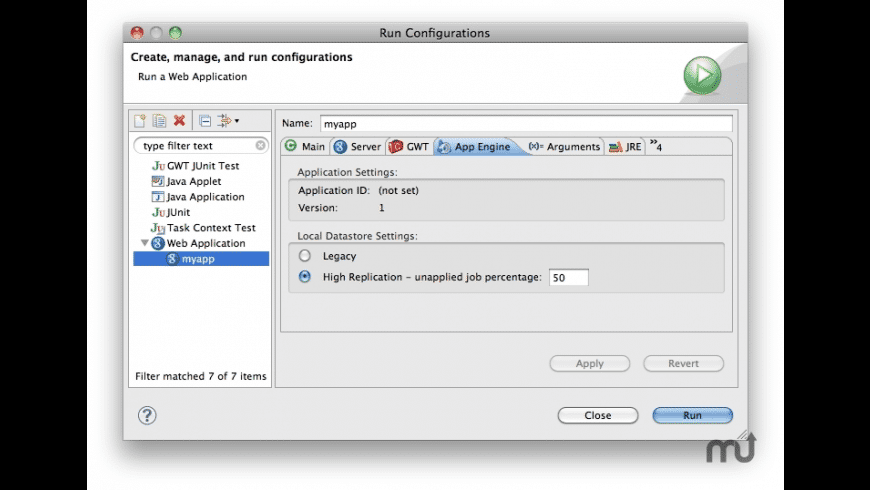

- #Google app engine sdk tutorial install#
- #Google app engine sdk tutorial download#
In the toolbar, click the Run button (Run as Web Application). In the Package Explorer view, select the StockWatcher project. Run the application in development mode (with Eclipse) What’s the difference? The App Engine development server is configured to mimic the App Engine production environment. However, instead of using the servlet container which comes with GWT, the application will run in the App Engine development server, the servlet container which comes with the App Engine SDK. We will run the application in GWT development mode to verify the project was set up successfully. 
Modify the “devmode” ant target to use the App Engine development server instead of the servlet container which comes with GWT. Modify the “javac” ant target to add byte-code enhancement. JDO is implemented with DataNucleus Java byte-code enhancement. Modify the “libs” ant target so that the required jar files are copied to WEB-INF/lib. Īdd a property for a App Engine tools class path. Edit StockWatcher/build.xml and add the following:Īdd a property for the App Engine SDK directory. The GWT ant build file needs to be modified to support DataNucleus JDO compilation and use of the App Engine development server. You will reference this configuration later by its name “transactions-optional”. Read more about appengine-web.xml.Īs we will be using Java Data Objects (JDO) later for storing data, create a file StockWatcher/src/META-INF/jdoconfig.xml with these contents: Substitute your App Engine application ID on the second line. Create a file StockWatcher/war/WEB-INF/appengine-web.xml with these contents: Edit the gwt.sdk property in the StockWatcher/build.xml, then proceed with the modifications below.Īpp Engine requires its own web application deployment descriptor.
#Google app engine sdk tutorial download#
Alternatively, If you would like to skip the Build a Sample GWT Application tutorial, then download and unzip this file. Complete the Build a Sample GWT Application tutorial, using webAppCreator to create a GWT application.
 If you haven’t yet, download the App Engine SDK for Java. This will add Google Plugin functionality to your project as well as copy required libraries to your project WEB-INF/lib directory automatically. Add the Google Web Toolkit and App Engine functionality to your newly created project (right-click on your project > Google > Web Toolkit / App Engine Settings…). At “Select root directory”, browse to and select the StockWatcher directory (from the unzipped file). Select the import source General > Existing Projects into Workspace. In the File menu, select the Import… menu option. Alternatively, if you would like to skip the Build a Sample GWT Application tutorial, then download, unzip and import the StockWatcher Eclipse project.
If you haven’t yet, download the App Engine SDK for Java. This will add Google Plugin functionality to your project as well as copy required libraries to your project WEB-INF/lib directory automatically. Add the Google Web Toolkit and App Engine functionality to your newly created project (right-click on your project > Google > Web Toolkit / App Engine Settings…). At “Select root directory”, browse to and select the StockWatcher directory (from the unzipped file). Select the import source General > Existing Projects into Workspace. In the File menu, select the Import… menu option. Alternatively, if you would like to skip the Build a Sample GWT Application tutorial, then download, unzip and import the StockWatcher Eclipse project. #Google app engine sdk tutorial install#
If you haven’t yet, install the Google Plugin for Eclipse with both GWT and App Engine SDK and restart Eclipse.Ĭomplete the Build a Sample GWT Application tutorial, making sure to create a project with both GWT and Google App Engine enabled. If you initially created your StockWatcher Eclipse project using the Google Plugin for Eclipse with both GWT and Google App Engine enabled, your project is already ready to run on App Engine. Set up a project Set up a project (with Eclipse) Or download the App Engine SDK for Java separately. If you plan to use Eclipse, you can download the App Engine SDK with the Google Plugin for Eclipse. After you’ve finished with this tutorial you will be able to reuse this application ID for other applications. Make a note of the application ID you choose because you will need this information when you configure the StockWatcher project. After your account is activated, sign in and create an application. Get started with App Engine Sign up for an App Engine account If you have not completed these tutorials and are familiar with basic GWT concepts, you can import the StockWatcher project as coded to this point, as instructed below. It also uses techniques covered in the GWT RPC tutorial. This tutorial builds on the GWT concepts and the StockWatcher application created in the Build a Sample GWT Application tutorial. Note: For a broader guide to deploying, see Deploy a GWT Application. Personalize the application with the User Service. Also, you’ll learn about some of the App Engine service APIs and use them to personalize the StockWatcher application so that users can log into their Google Account and retrieve their list of stocks. In this section, you’ll deploy this application on Google App Engine. At this point, you’ve created the initial implementation of the StockWatcher application, simulating stock data in the client-side code.







 0 kommentar(er)
0 kommentar(er)
